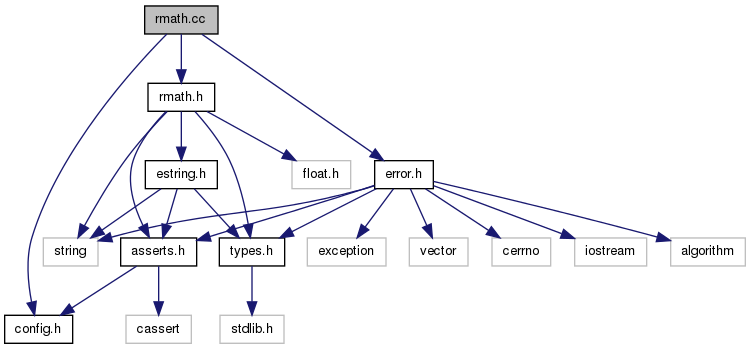|
rvm 1.08
|
|
rvm 1.08
|

Go to the source code of this file.
Functions | |
| template<> | |
| const float | max_limit< float > () |
| A small set of numeric limits routines, since gcc prior to 3.x doesn't have numeric_limits. | |
| template<> | |
| const float | min_limit< float > () |
| Return the smallest positive number that a float may hold. | |
| template<> | |
| const double | max_limit< double > () |
| Return the largest possible number that a double may hold. | |
| template<> | |
| const double | min_limit< double > () |
| Return the smallest positive number that a double may hold. | |
| const double max_limit< double > | ( | ) |
| const float max_limit< float > | ( | ) |
A small set of numeric limits routines, since gcc prior to 3.x doesn't have numeric_limits.
Return the largest possible number that a float may hold.
Find the maximum limit for a type, equivalent to std::numeric_limits<T>.max() for systems that don't have the limits c++ header file. Find the maximum limit for a type, equivalent to std::numeric_limits<T>.min() for systems that don't have the limits c++ header file. Return the largest possible number that a float may hold.
Definition at line 78 of file rmath.cc.
Referenced by test4().
| const double min_limit< double > | ( | ) |
Return the smallest positive number that a double may hold.
Caveat: This is in contrast to other types, where min_limit<T>() will return either 0 or the largest possible negative number that the type may hold. If you are looking for the largest possible negative number for any given type, use lowest_value<T>() instead.
Definition at line 117 of file rmath.cc.
Referenced by test4().
| const float min_limit< float > | ( | ) |
Return the smallest positive number that a float may hold.
Caveat: This is in contrast to other types, where min_limit<T>() will return either 0 or the largest possible negative number that the type may hold. If you are looking for the largest possible negative number for any given type, use lowest_value<T>() instead.
Definition at line 93 of file rmath.cc.
Referenced by test4().
 1.7.3
1.7.3